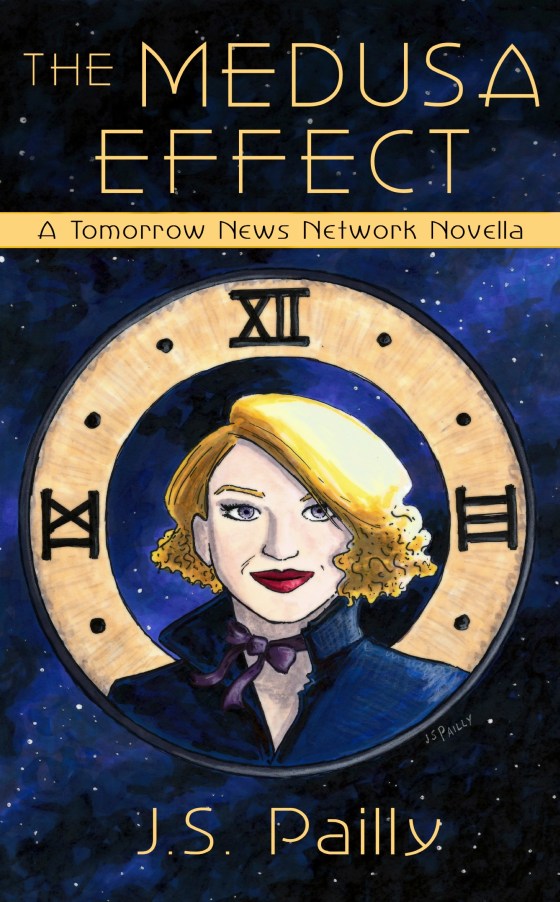Hello, friends! Welcome to Sciency Words, a special series here on Planet Pailly where we talk about those weird words scientists like to use. Today on Sciency Words, we’re talking about:
CLOSED TIMELIKE CURVES
Austrian-born logician and mathematician Kurt Gödel was one of Albert Einstein’s closest friends. At Princeton’s Institute for Advanced Study, the two were known to take long walks together, discussing all sorts of strange and wonderful things, no doubt.
As science historian James Gleick tells the story in his book Time Travel: A History, Gödel presented Einstein with a very special gift for Einstein’s 70th birthday. It was the kind of gift only a person like Einstein would appreciate: a series of mathematical calculations. Specifically, these were calculations based on Einstein’s own theory of general relativity which showed that yes, time travel is possible.
Gödel’s calculations were officially published in this 1949 paper. Now I won’t try to explain Gödel’s math because a) I don’t really understand it and b) it’s not really important for the purposes of a Sciency Words post. What is important for our purposes is that Gödel’s 1949 paper introduced a new concept called “closed timelike curves.”
Well, technically speaking, Gödel used the term “closed time-like lines,” not “closed timelike curves.” But as Google ngrams shows us, the hyphen quickly dropped out of “time-like,” and by the 1990’s, “curves” beat out “lines.” So today, closed timelike curves is the most broadly accepted way to say what Gödel was trying to say. The term is also commonly abbreviated at C.T.C.

In short, a closed timelike curve is a path through space and time that circles back to its own beginning. As I understand it, it would take a stupendous amount of force to twist space-time around itself in this way. You’d need the extreme gravitational force of a black hole—or perhaps something even more extreme than that—in order to make a closed timelike curve happen.
But it could happen. As Gödel demonstrated in 1949, general relativity would allow a closed timelike curve to exist, or at least relativity does not forbid such things from existing.
So time travel is possible. It may not be anywhere near practical, but it is at least possible.

Speaking of time travel, are you a fan of time travel adventure stories? The kinds of stories you might see on Doctor Who or The Twilight Zone? Then please check out my new book, The Medusa Effect: A Tomorrow News Network Novella, featuring time traveling news reporter Talie Tappler and her cyborg cameraman, Mr. Cognis.
I love this phrase very much. Thank you for sharing!
LikeLiked by 1 person
It’s a good one! It’s one of those things you’d think a science fiction writer dreamed up, but no, this comes from the work of an actual scientist.
LikeLiked by 1 person
A good hook in a story-line will always grab a readers attention.
LikeLiked by 1 person
Closed time-like curves are not paradoxes.
A paradox would be a logically inconsistent situation, like if someone killed their grandfather (grandfather paradox) then they would not be able to be born, so a “book” being written would have 2 different universes to explain the same set of events (same place same time – 2 or more different things happening from different perspectives)
It is logically consistent, however, to have time loops exist. If someone is afraid of meeting themselves, for instance, they might avoid themselves altogether when time traveling. Say they left a footprint or spilled water that was hardly noticed by their earlier self. That is fine because their path is set in stone: it never changed a single event – not a single particle in the universe is different from either perspective. This implies that the intention of the user potentially plays a mechanical component in the construction of the time loop.
So the “grandfather paradox” doesn’t disprove closed timelike curves. It just shows that human intention is likely a necessary mechanical component of time machines which can transport humans.
LikeLike